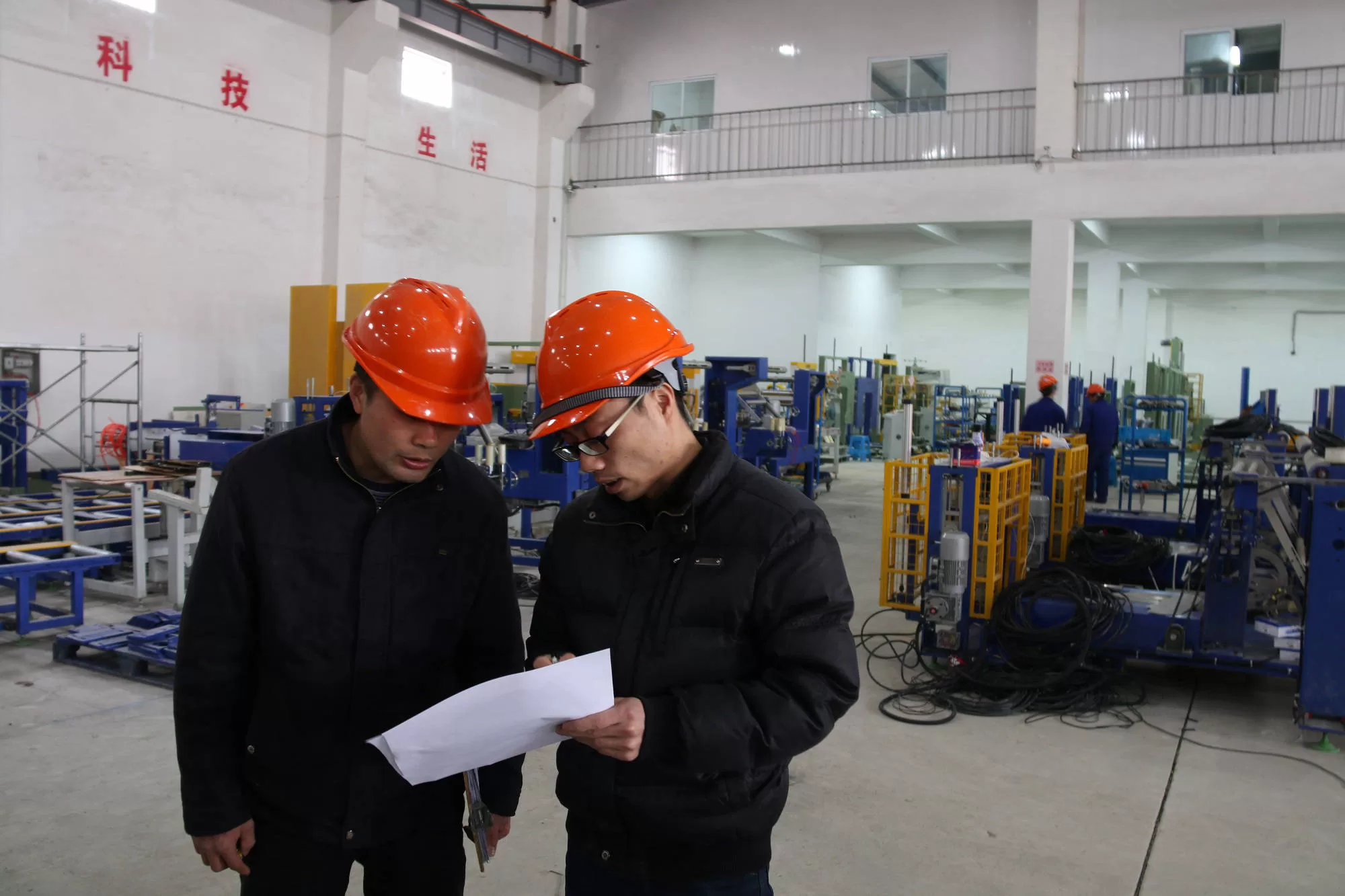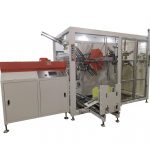How Automated Steel Coil Packing Lines Are Helping Companies Meet Increased Demand
- How Automated Steel Coil Packing Lines Are Helping Companies Meet Increased Demand
- 1. The Growing Demand for Steel Coil Packaging Efficiency
- 2. How Automated Steel Coil Packing Lines Work
- 3. Benefits of Automated Steel Coil Packing Lines for Meeting Increased Demand
- 4. Technological Advancements Driving Efficiency in Steel Coil Packing
- 5. Challenges and Solutions in Implementing Automated Steel Coil Packing Lines
- 6. The Future of Automated Steel Coil Packing Lines
- Conclusion: Meeting Demand with Innovation

In today’s fast-paced industrial landscape, steel manufacturers face growing pressure to meet increasing global demand. As industries such as construction, automotive, and infrastructure development continue to expand, the need for high-quality, efficiently packed steel coils has never been greater. Automated steel coil packing lines have emerged as a critical solution, enabling companies to keep up with demand, reduce labor costs, and ensure safe and efficient shipping of their products.
This article will explore how automated steel coil packing lines are helping companies navigate rising demand while maintaining high standards of productivity, quality, and safety. We’ll dive into the mechanics of these systems, examine their benefits, and look ahead to the future of automation in the steel industry.
1. The Growing Demand for Steel Coil Packaging Efficiency
The steel industry has experienced significant growth over the last few decades, driven by global infrastructure projects, the booming automotive industry, and increased demand for consumer goods. However, this surge in demand has placed immense pressure on manufacturers to increase their output while minimizing costs.
Manually packaging steel coils has proven inefficient in meeting these demands. The process is labor-intensive, time-consuming, and prone to human error, which can lead to inconsistent packaging quality, damaged goods, and even costly shipping delays. As companies seek to improve their operations, the implementation of automated steel coil packing lines has become a necessity rather than a luxury.
With the integration of automation, manufacturers can streamline their packaging processes, allowing them to meet higher production quotas without sacrificing the quality of their products. Automated steel coil packing lines not only reduce the reliance on manual labor but also improve the overall efficiency of the production line.
2. How Automated Steel Coil Packing Lines Work
Automated steel coil packing lines are sophisticated systems designed to handle the packaging process from start to finish. These machines operate with minimal human intervention, ensuring that each coil is properly wrapped, strapped, and prepared for shipment. Here’s how the typical process unfolds:
- Coil Loading: Steel coils are loaded onto the system using forklifts or cranes, depending on the size and weight of the coils.
- Protective Wrapping: The coil is then automatically wrapped with a protective material, such as stretch film or VCI paper, to guard against moisture, dust, and corrosion during transportation and storage.
- Strapping: Once wrapped, the system applies durable steel or plastic straps around the coil to keep it securely in place.
- Labeling and Weighing: The machine labels each coil with essential information such as weight, size, and shipping destination, allowing for seamless logistics and tracking.
- Palletizing or Loading: Finally, the packed coils are either placed onto pallets for further handling or directly loaded into containers or trucks for shipment.
Automated systems ensure a high level of consistency in packaging quality, which reduces the likelihood of damaged goods and customer complaints. With these machines, steel manufacturers can easily adjust to the demands of their customers while maintaining efficient, error-free processes.
3. Benefits of Automated Steel Coil Packing Lines for Meeting Increased Demand
3.1 Faster Production Times
One of the primary advantages of automated packing lines is their ability to significantly speed up the production process. Traditional, manual packaging methods are slow and require multiple workers, while automated systems can complete the entire packaging process in a fraction of the time. This increased speed allows manufacturers to meet higher production targets and fulfill orders more quickly, even as demand continues to rise.
3.2 Reduced Labor Costs
As global demand for steel rises, companies are seeking ways to manage labor costs while increasing output. Automated packing lines help manufacturers achieve both objectives by reducing the need for a large workforce. The machines handle the most labor-intensive tasks, freeing up workers to focus on other high-value areas of production. Automation not only cuts labor costs but also minimizes the risks associated with worker fatigue, injuries, and downtime.
3.3 Improved Packaging Quality and Consistency
Automated systems ensure that every steel coil is packaged to the same high standard. This consistency reduces the risk of damaged goods during transit, which can result in costly returns or repairs. Furthermore, well-packaged steel coils are easier to transport and store, providing additional logistical benefits. The uniformity achieved by automation enhances customer satisfaction by delivering damage-free products with predictable quality.
3.4 Increased Safety for Workers
Handling steel coils manually presents significant safety risks for workers, including potential injuries from lifting heavy objects, cutting straps, or using tools. By automating the packaging process, companies can drastically reduce these hazards, creating a safer workplace for their employees. Automated systems are designed with safety in mind, reducing the need for manual intervention and minimizing the chance of accidents.
3.5 Scalability to Meet Future Demand
One of the greatest strengths of automated steel coil packing lines is their scalability. These systems are designed to handle a range of production volumes, making it easy for manufacturers to adjust their operations as demand fluctuates. As global demand for steel continues to grow, companies with automated systems will be well-positioned to increase their output without requiring significant additional investments in labor or equipment.

Get Your Best Solution !
4. Technological Advancements Driving Efficiency in Steel Coil Packing
The development of advanced technologies in steel coil packing lines has played a key role in their success. From improved software integration to smarter, more flexible machinery, technological innovations are constantly enhancing the capabilities of these automated systems.
4.1 Artificial Intelligence (AI) and Machine Learning
AI is being integrated into many aspects of industrial automation, and steel coil packing lines are no exception. By using machine learning algorithms, these systems can analyze data from previous packaging cycles to optimize future operations. This might include adjusting strapping tension, modifying wrap coverage, or identifying issues that could lead to equipment malfunctions. AI ensures that the system continually learns and improves, providing better efficiency with each cycle.
4.2 IoT-Enabled Systems
The Internet of Things (IoT) allows for real-time monitoring and control of automated packaging lines. Manufacturers can track key performance metrics, such as cycle times, energy consumption, and equipment wear, from a central dashboard. This level of connectivity ensures smooth operation and helps prevent costly downtime by allowing for predictive maintenance.
4.3 Energy Efficiency Improvements
As environmental concerns continue to grow, steel manufacturers are looking for ways to reduce their carbon footprint. Modern automated packing lines are equipped with energy-efficient motors, advanced drive systems, and optimized control software that reduces energy consumption. These advancements not only help companies meet sustainability goals but also lower operational costs.
5. Challenges and Solutions in Implementing Automated Steel Coil Packing Lines
While the benefits of automation are clear, implementing an automated packing line is not without challenges. However, with proper planning and the right solutions, these challenges can be overcome, allowing companies to maximize the return on their investment.
5.1 Initial Investment Costs
Automated packing lines require a significant upfront investment, which can be a barrier for smaller manufacturers. However, companies should view this as a long-term investment. Over time, the savings generated by reduced labor costs, improved efficiency, and fewer damaged goods will outweigh the initial expense.
5.2 Integration with Existing Systems
Many manufacturers may worry that their current operations will need major overhauls to accommodate automated systems. However, modern packing lines are designed to integrate seamlessly with existing equipment and workflows. Customization options allow manufacturers to tailor their systems to meet the specific needs of their operation without major disruptions.
5.3 Employee Training and Adaptation
The introduction of automation can be met with resistance from workers who are unfamiliar with the technology. Comprehensive training programs are essential to ensure that employees are comfortable with operating and maintaining the new systems. By fostering a culture of continuous learning, companies can ensure a smooth transition to automation and maximize the benefits of their new packing line.
6. The Future of Automated Steel Coil Packing Lines
The future of automated steel coil packing is bright, with continued advancements in AI, IoT, and robotics driving further improvements in efficiency and scalability. As demand for steel continues to rise, manufacturers that invest in these systems will be better positioned to adapt to market changes, increase their production capabilities, and reduce costs.
Looking ahead, we can expect to see even more sophisticated automation systems that are capable of handling larger, more complex orders with minimal human intervention. Additionally, as sustainability becomes a higher priority for industries worldwide, the development of eco-friendly packaging materials and processes will likely take center stage.
Conclusion: Meeting Demand with Innovation
In a world where steel is the backbone of countless industries, the need for efficient, reliable packaging systems is more critical than ever. Automated steel coil packing lines are not only helping companies meet the increasing demand for steel but also improving safety, reducing costs, and delivering consistent product quality. As technology continues to evolve, these systems will become even more indispensable to the global steel industry.
For manufacturers looking to stay competitive in a rapidly growing market, investing in automated steel coil packing lines is no longer an option—it’s a necessity. These machines provide the scalability, efficiency, and reliability needed to meet the challenges of modern steel production, all while positioning companies for long-term success.
This article outlines how automated steel coil packing lines are revolutionizing production efficiency, helping businesses meet growing global demand while improving overall performance.

Get Your Best Solution !









